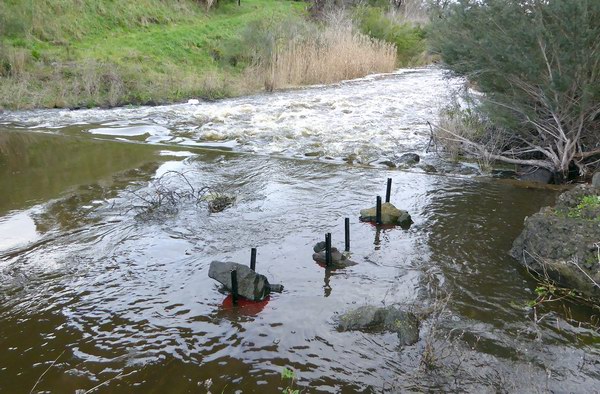Australian Trout Foundation
HOW WE USE TECHNOLOGYJordan Scotty Incubator Boxes
Technology + Partnerships = Our Fisheries’ Future.
Over the last five years (or so) the Australian Trout Foundation has been working hard to test the current pulse of our fishery and ways to improve it. The big leap began a couple of years ago when the President Terry George and Secretary Tony Borrack sent out questionnaires to individuals and clubs to inquire about the state of the fishery from the angler’s point of view. The results were from dire to poor in many historically fine fisheries and the declining numbers in creel tallies was general and alarming state wide.
Liaising with Fisheries Victoria, it was decided to initiate some strategies to improve the fishery. Initially our research uncovered the effectiveness of incubators in minimising the mortality rates of eggs and fry from 5 – 20% to 90%. We believe the Jordan Scotty incubator designed by Fred Jordan, a salmonid technician, and improved with research and development by Scott Plastics was ideal for our purposes. We purchased ten of these and the wheels began to turn.
The Jordan Scotty incubator has pairs of plates loaded with fertile eggs and the fry can only leave the incubator when the egg sac has been exhausted. This method minimises predation, fungal infections and silt suffocation. The result is minimal loss of eggs and fry because they are protected for the vulnerable, very early period of their lives. Then nature takes over fish management.
The incubators are sited in the stream gravel beds where there is a good flow of water through the cells and underlying gravel beds. It is imperative that optimum flows of oxygenated water flow through the holes for maximum effect. The incubators are submerged, covered with 8 centimetres of gravel and anchored. They must be monitored regularly.
Okay, there’s the concept and now for the application.
We liaised again with Fisheries Victoria and a partnership was born for this experiment. The consultation resulted in an agreement between ATF and Fisheries to place a number of the incubators into the Hopkins in south west Victoria as a trial site.
Five incubators were placed into the river at various locations and we all waited with anticipation. When Troy Duthie and Colby Bowden from Fisheries checked the three incubators under Framlingham Bridge, 90% of the eggs were liberated and some fry with egg sacs were still present. The incubator at Kent’s Ford Bridge revealed similar excellent results. The fifth incubator regrettably went to God, the ocean or someone’s shed.
We believe if we can assist higher survival rates in every stage of development of our trout and natives’ populations, a better fishery is the consequence.
So then, what about the future of our wild fishery? We believe the solution to a diminishing fishery is simple: Partnerships.
The partners should include all interested parties: Fisheries Victoria, the Australian Trout Foundation, Native Fish Australia, VRFish, the Council of Victorian Fly Fishing Clubs, district fishing clubs, scientists from Snob’s Creek and the Arthur Rylah Institute, fishing suppliers and the ‘Fishing Media.’ It is imperitive that we coordinate these groups into a cohesive unit with a long term vision for our sustainable fishery so it can be rejuvenated to its best potential.
We just want our children and grandchildren to experience the joy of catching a leaping, surging wild trout (and/or native species) in the pristine, wild country rivers and lakes this magnificent state has to offer. Let’s take up the challenge!
Stop Press. The missing incubator has since been located by Fisheries. God will have to procure his own.
Volunteer Today!
If you are not already listed as a volunteer, please do so by providing your contact details by email at: habitat@australiantroutfoundation.com.au or via the form below.





